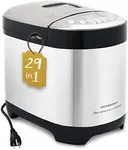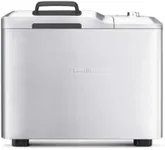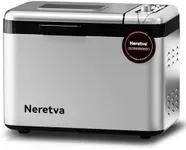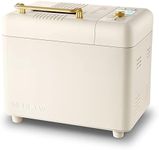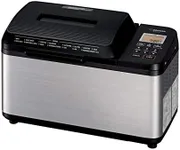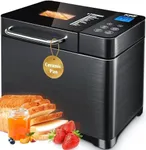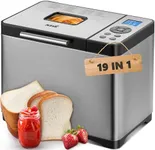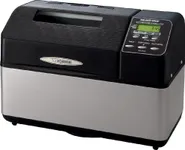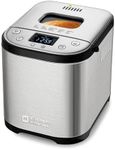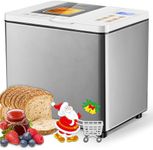Buying Guide for the Best Bread Machine For Sourdough
Choosing a bread machine for sourdough baking is all about finding a model that can handle the unique needs of sourdough dough, which is often stickier and requires longer rising times than regular bread. The right bread machine can make the process much easier, allowing you to enjoy fresh, homemade sourdough with minimal effort. When shopping, focus on features that support flexibility, durability, and ease of use, so you can experiment and perfect your sourdough recipes.Dough Cycle CustomizationThe dough cycle refers to the program that mixes, kneads, and allows the dough to rise. For sourdough, this is especially important because sourdough often needs longer fermentation and rising times compared to standard yeast breads. Some machines offer preset cycles, while others let you adjust the kneading and rising times. If you want to experiment with different sourdough recipes or hydration levels, look for a machine that allows you to customize these cycles. If you prefer a more hands-off approach, a machine with reliable preset dough cycles for artisan or sourdough bread can be sufficient.
Timer and Delay StartA timer or delay start feature lets you set the bread machine to start at a later time, which is useful for sourdough because the dough often needs to ferment for several hours. This feature is important if you want to mix your dough and have it ready to bake at a specific time, such as in the morning or after work. Machines with longer delay timers (up to 13 hours or more) are more flexible for sourdough schedules. If you have a busy lifestyle or want fresh bread at a certain time, prioritize a machine with a reliable and long delay timer.
Loaf Size and Shape OptionsBread machines come with different loaf size settings, usually ranging from 1 to 2.5 pounds, and the shape of the pan can be vertical or horizontal. Sourdough can rise differently than regular bread, so having the option to choose the loaf size helps you match your recipe and household needs. If you bake for a family, a larger loaf size is helpful, while smaller households may prefer compact loaves. The shape can also affect the crust and crumb, so consider what kind of loaf you prefer.
Kneading Paddles and Pan QualityThe kneading paddles are responsible for mixing and kneading the dough, and the quality of the bread pan affects how evenly the bread bakes and how easy it is to remove. For sourdough, which can be sticky and dense, sturdy paddles and a non-stick, durable pan are important. Some machines come with dual paddles for better kneading, which can be helpful for sourdough. If you plan to bake often or with high-hydration doughs, look for robust paddles and a high-quality, easy-to-clean pan.
Sourdough or Artisan Bread SettingsSome bread machines have specific settings for sourdough or artisan breads, which are designed to handle longer fermentation and different kneading needs. These settings can simplify the process, especially for beginners, by automatically adjusting the timing and temperature. If you are new to sourdough or want a more automated experience, a machine with a dedicated sourdough or artisan setting can be very helpful. More experienced bakers may prefer manual control, but these settings are a good starting point.
Ease of CleaningSourdough dough can be sticky and messy, so a bread machine that is easy to clean will save you time and frustration. Removable paddles and pans, non-stick surfaces, and simple design features make cleaning up much easier. If you plan to bake frequently, prioritize a machine that is known for easy maintenance, as this will make the whole process more enjoyable.

